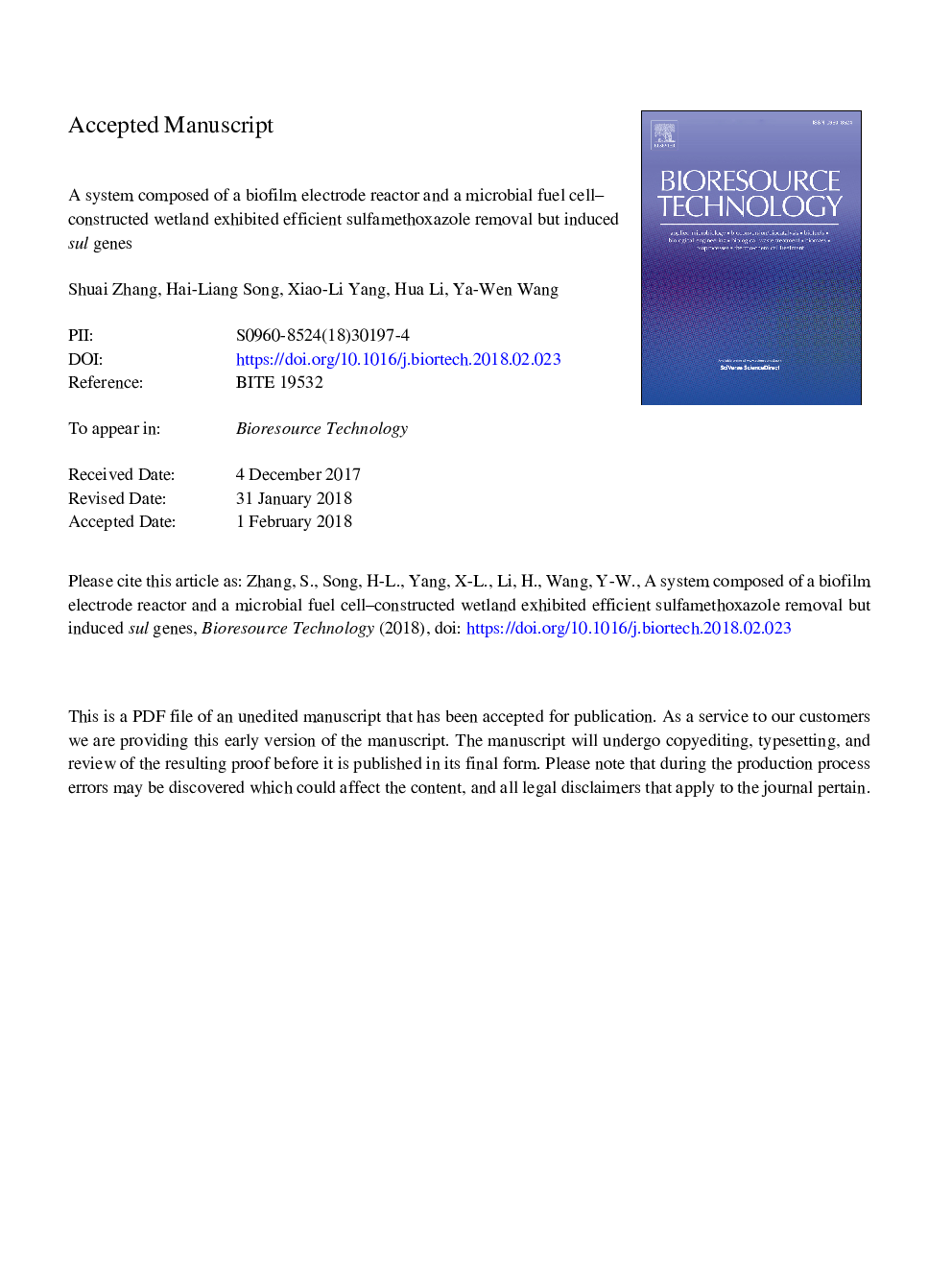| Article ID | Journal | Published Year | Pages | File Type |
|---|---|---|---|---|
| 7067859 | Bioresource Technology | 2018 | 34 Pages |
Abstract
The aim of this work was to study sulfamethoxazole (SMX) removal efficiency and fate of corresponding sul genes in a stacked microbial fuel cell-constructed wetland coupled biofilm electrode reactor system (MFC-CW-BER). Findings showed that two stacked MFC-CWs could provide a relatively stable electricity supply to support the biofilm for SMX removal. Excellent SMX removal (>99.29%) was obtained in the BER-MFC-CW. Compared with the 2000â¯Âµgâ¯Lâ1 SMX influent, the relative abundance of the sul genes in biofilm media and effluent was enhanced with continuously high concentrations of SMX (4000â¯Î¼gâ¯Lâ1). The relative abundances of sul genes in biofilm media and effluent increased as the hydraulic retention time decreased. However, there was no obvious variation in the relative abundance of sul genes in the effluent from MFC-CWs. No effect could be observe of the direct voltage and bioelectricity on the relative abundance of the sul genes in the BER.
Related Topics
Physical Sciences and Engineering
Chemical Engineering
Process Chemistry and Technology
Authors
Shuai Zhang, Hai-Liang Song, Xiao-Li Yang, Hua Li, Ya-Wen Wang,
